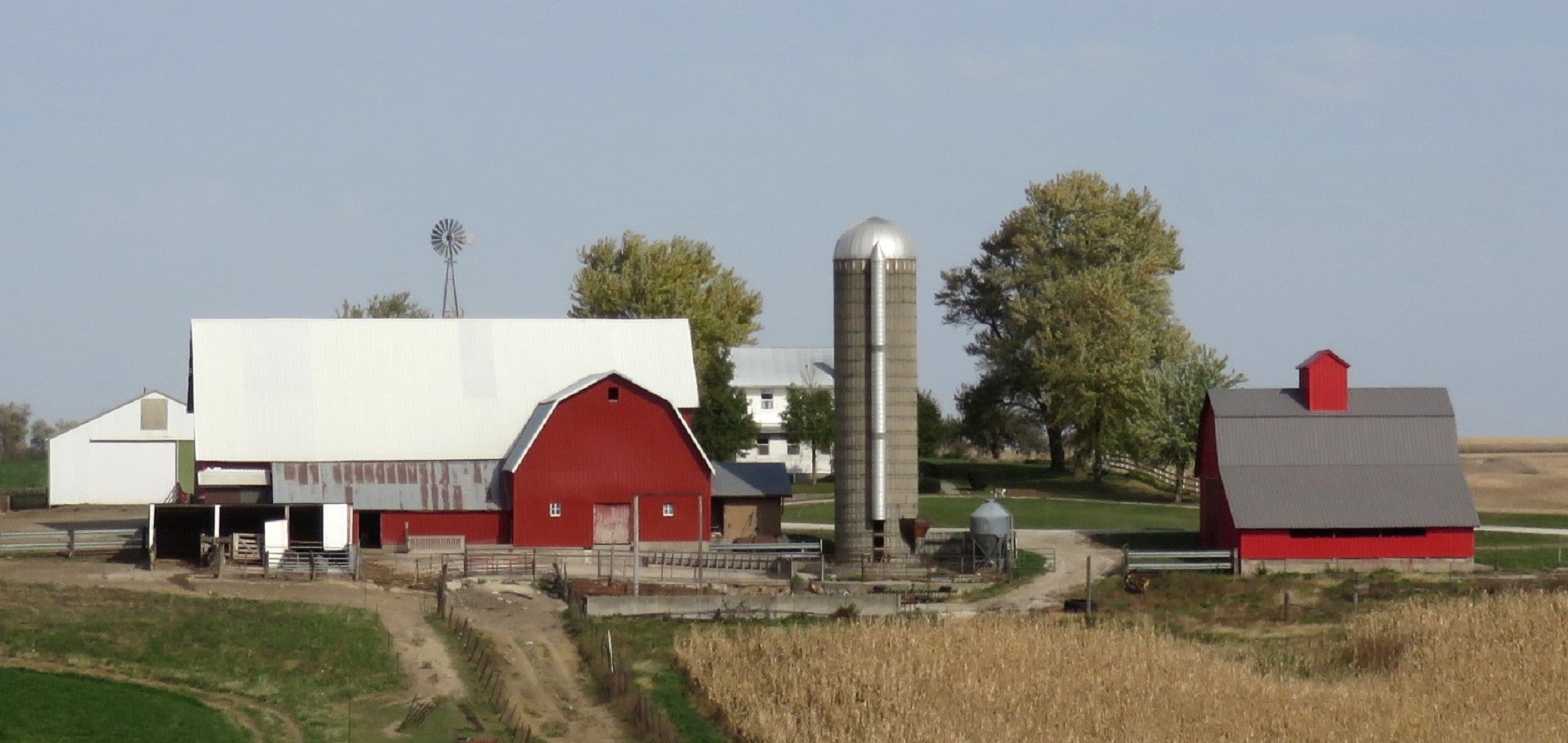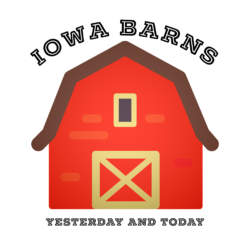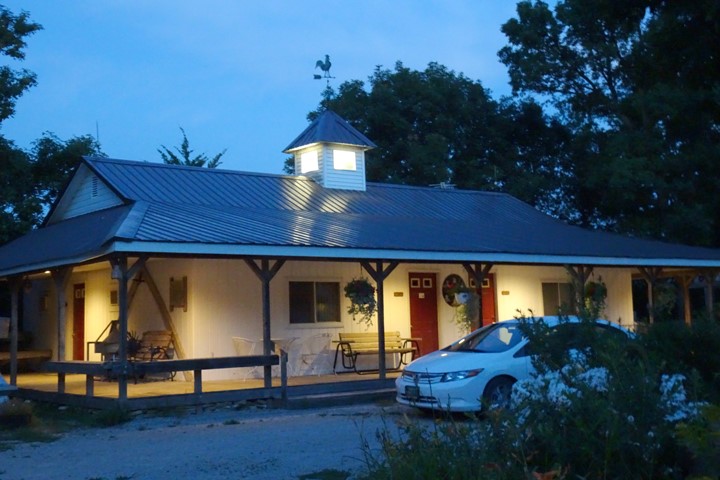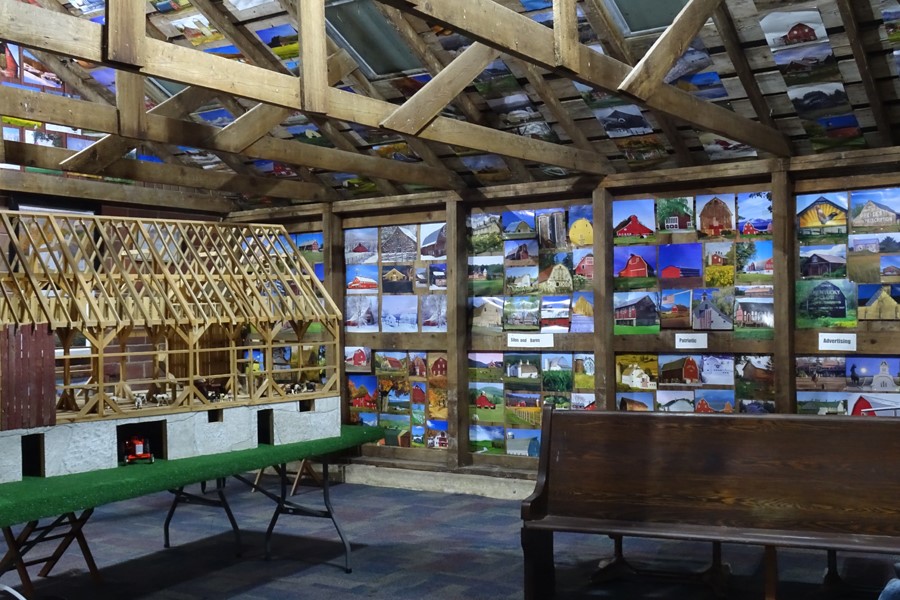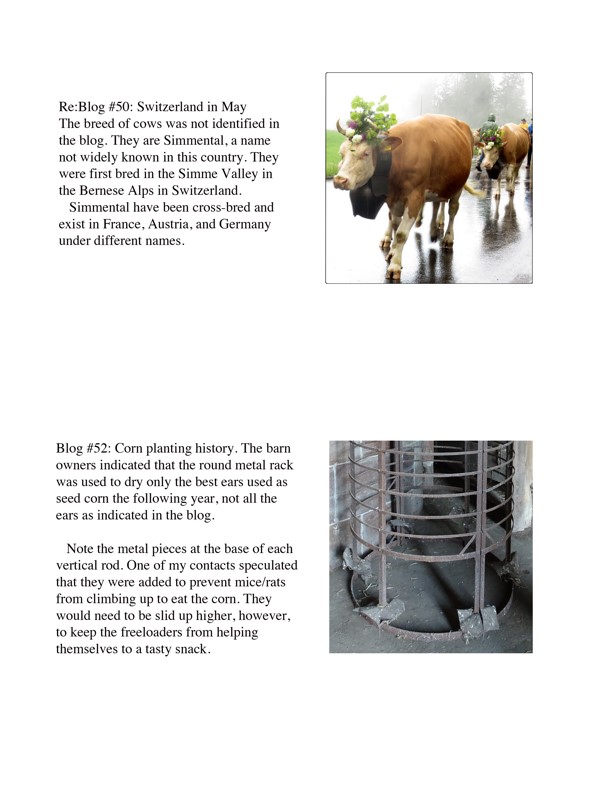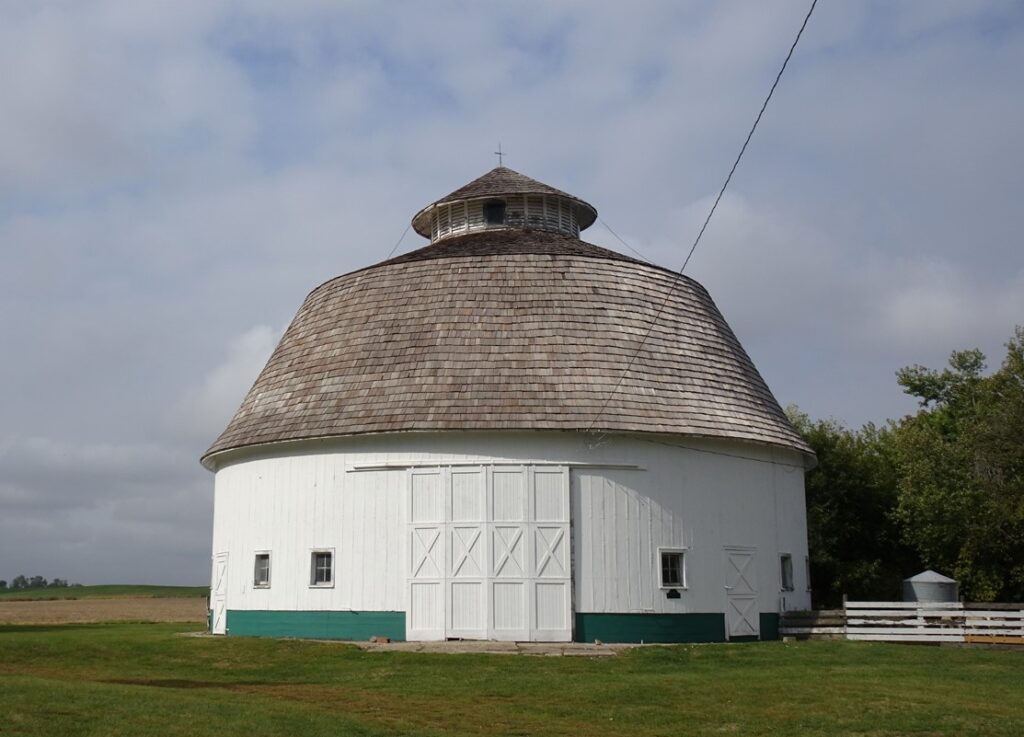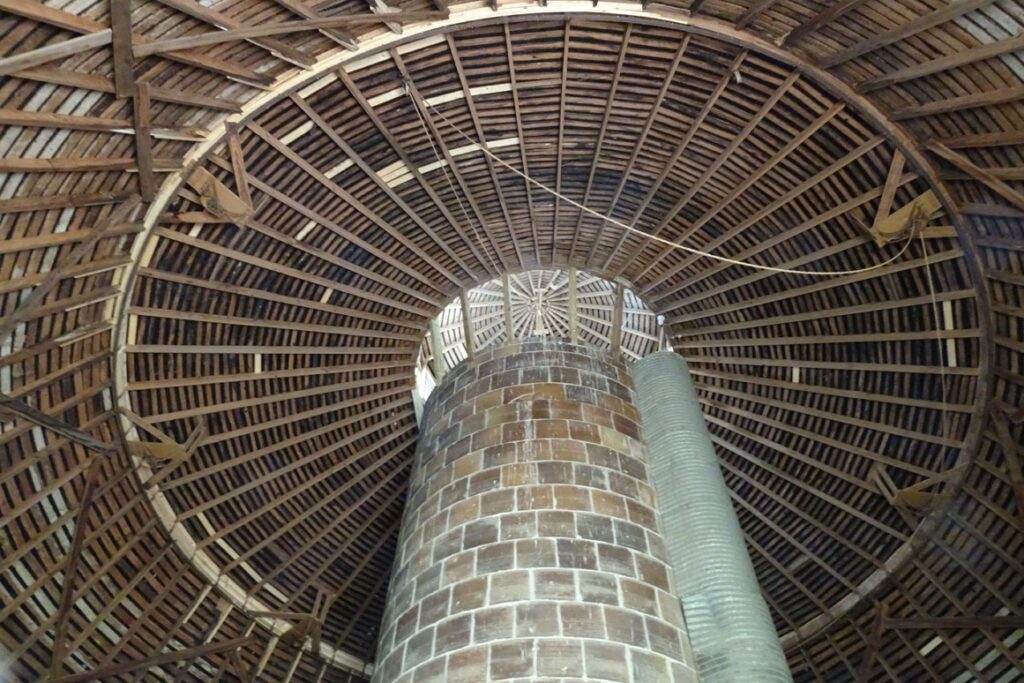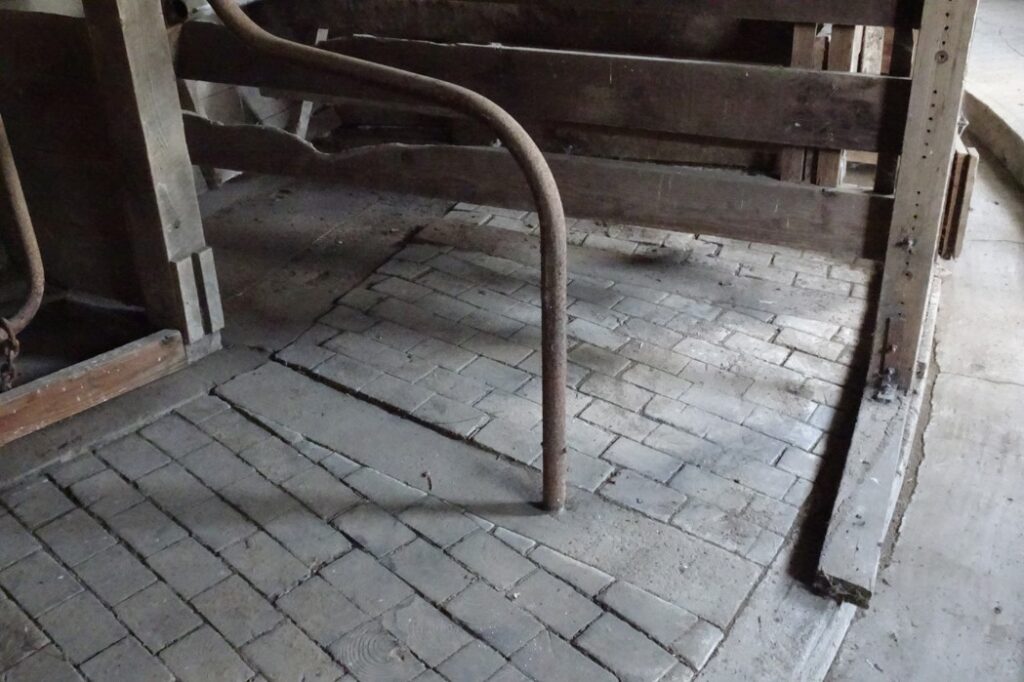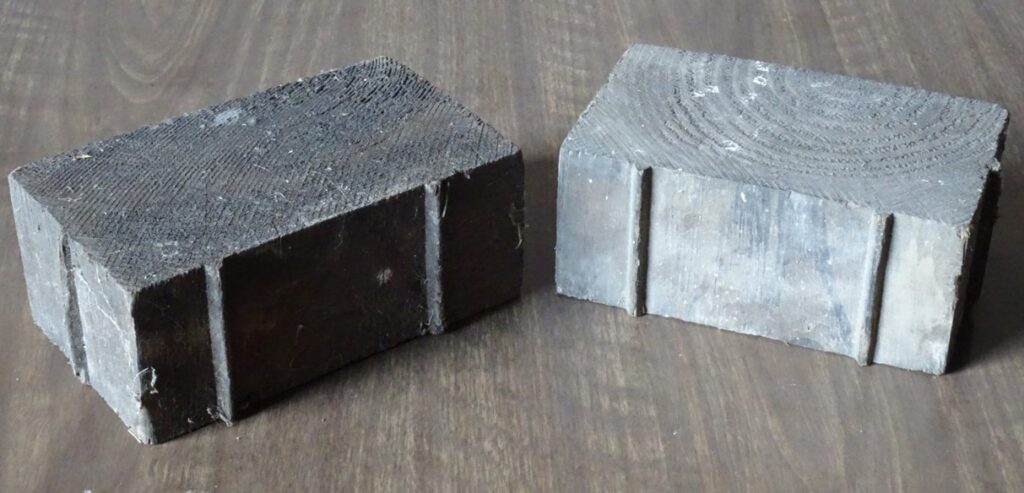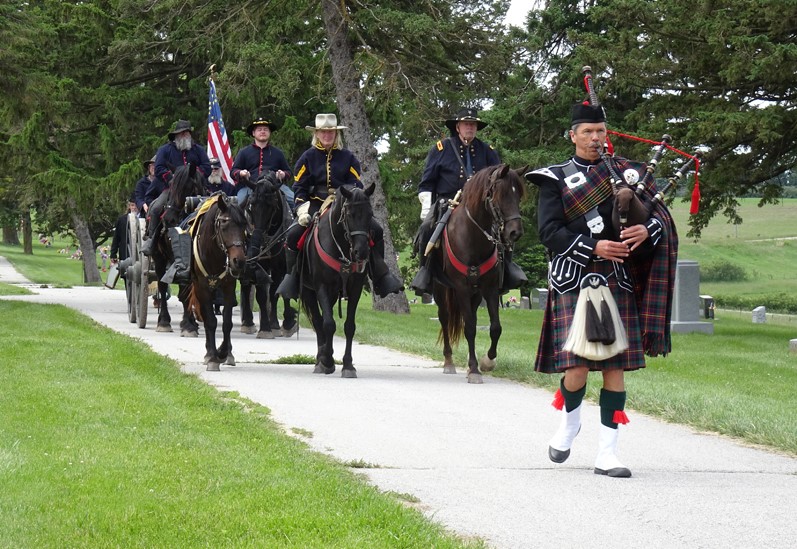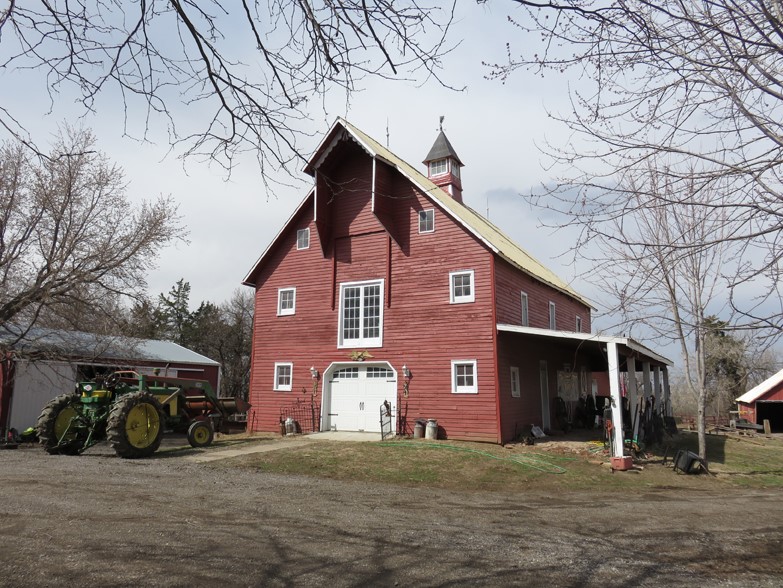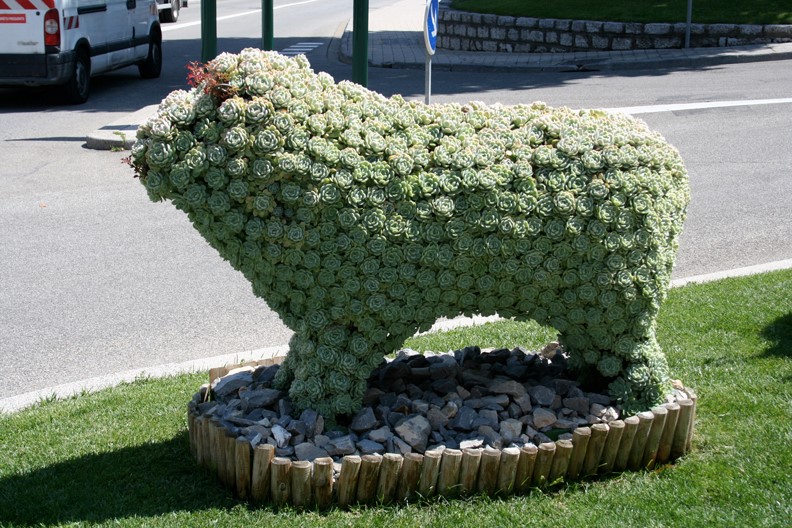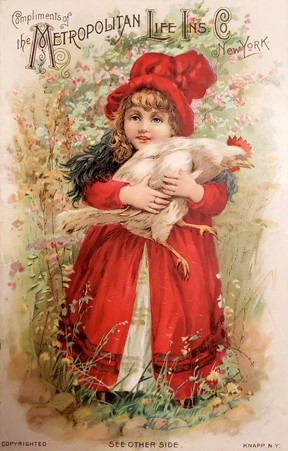
Summer and chickens are featured in this Metropolitan Life Insurance Company advertising card given to potential customers over a century ago. Hopefully, customers would have been interested in both life insurance and chickens.

What about chickens and this barn? Originally intended for livestock, it became a home for chickens some years ago at Greg and Janet Holcomb’s farm at the edge of Martelle. See more of this barn story on page 208 in Iowa Barns yesterday and today. (May 2022
Ninety hens and 125 pullets were occupying the barn in August when we stopped by. Janet had dozens of eggs to sell and we helped the cause by buying a dozen.
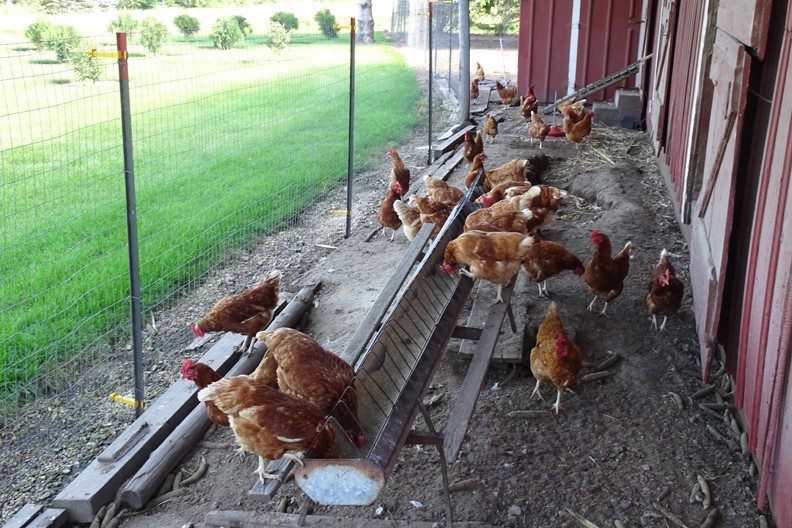
One of the areas for the hens is pictured here. Inside, nesting boxes are provided with egg compartments, tilted so eggs roll down, keeping the eggs clean. Janet notes that there are hens that want to sit in the nesting boxes, so they try to retrieve the just laid egg by rolling it upwards to the nesting box. Some of them manage this feat. Then they begin incubating the egg like a good hen should. Determined hens they are, but not smart enough to know the eggs are not fertilized. (August 2022 photo)
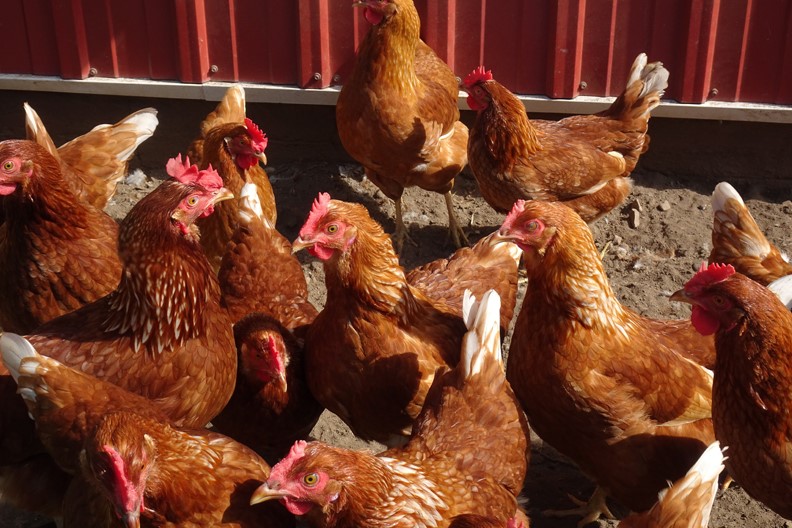
The pullets live next door to the hens, separated by a fence. The pullets are colorful, curious, and lively. They are teenage hens and will start laying eggs at four to six months. Then there will be MORE eggs to deal with. (August 2022 photo)
